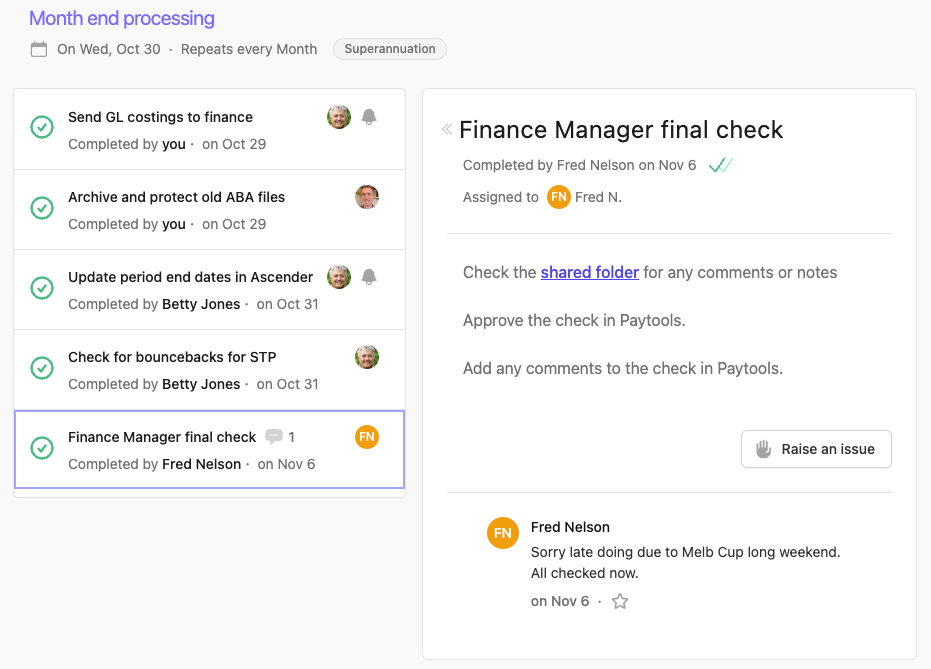The payroll team at a well-established manufacturing company recently decided to make the shift from manual processes to a more structured and digital payroll function using Paytools.
The goal was to create a consistent process for everyone, supported by digital tools and less manual effort.
In this article, a Payroll Operations and Advisory Manager will explain what payroll transformation looks like in practice – focusing on their journey to a more efficient payroll function.
Their experience offers practical lessons that payroll teams across all industries can learn from.
About the company
This manufacturing organisation has 1,500+ employees across Australia, New Zealand and PNG. Their workforce includes both monthly and fortnightly pay groups.
The business uses SuccessFactors for HR, MicroPay for payroll and Connex for pay slips and leave. While they had these systems in place, much of the payroll work still relied on paper forms, Excel and manual checks.
Why digitisation matters
Modernising payroll is not about chasing new tech. It’s about making work more accurate and efficient for your team.
This team faced several common problems:
-
- Manual effort: Payroll information was passed around in spreadsheets and emails. There was no single source of truth.
- End-of-month pressure: Key parts of the payroll process required extra checking and coordination every cycle.
- Limited visibility: It was difficult to see who had completed each step and when. This created uncertainty and risk.
- Lost productivity: Local teams spent time gathering information instead of focusing on other important work.
By shifting to a digital process, the business reduced double handling, improved accuracy and created better audit records. They expect to save hours every week by removing this manual work. That time will be used elsewhere, for more value adding projects in the business – not removed. This efficiency gain is one of the many tangible outcomes of their payroll transformation.
Operationalising payroll processes
Payroll processes were once tracked in Excel. That meant only one person could open the file at a time. It was hard to update and did not show who had done what. Knowledge was not shared. It stayed in people’s heads.
After moving to Paytools, the team created a digital library of checklists and templates. These are now used live during each pay cycle.
The improvements include:
-
- Live and interactive checklists: Steps are written out with links, screenshots and extra context. Anyone can follow them. Templates are easy to update at any time.
- Proper documentation of sub-processes: Common tasks like onboarding, terminations and transfers are now being captured. These were often missed or only known by a few people.
- Audit trail for every action: The system tracks who completed each task and when. This makes audits smoother and helps with accountability.
- Automatic notifications: Teams messages are sent when it is someone’s turn to act. There is no need to send extra reminders or ask where things are up to.
- Shared issue tracking: Problems and reminders are logged in one place. Anyone can see what has been raised and what still needs to be resolved.
The tool was adopted quickly because it was simple. Once the team got started, they began using more features without formal training.
“Paytools provides evidence that shows that we’ve actually done what we said we’re doing, so auditors can independently source the information they need with view only access. They love it!”
Payroll Operations and Advisory Manager
Managing payroll queries better
Before the change, payroll questions came through many different channels. Shared inboxes, direct emails and Teams messages made it hard to keep track. There was no simple way to measure how many queries were coming in or what they were about.
Now the business uses online forms with structured fields. Queries go into the right queue straight away. This has helped the team:
-
- Capture all required information up front
- Cut back on internal emails
- Work together more easily across payroll and HR
- Report on trends and spot repeat issues
With better data, the team can identify common problems and provide support where needed, another key benefit of a successful payroll transformation.
“Communication now happens organically which has reduced a whole lot of traffic for the team. To me it was a no-brainer when we first saw Paytools.“
Payroll Operations and Advisory Manager
Building the case for change
The payroll system was not being replaced right away. But the team knew they could still improve other parts of the process in the meantime.
They focused on operational gaps that could be solved now. Paytools was one of the first steps. It was fast to implement and delivered clear value straight away.
Leadership support was gained by showing real examples of compliance breaches and asking a simple question. Would the business want its name to appear in one of these headlines?
That message was more effective than a technical pitch. We’ve also created a business case template in Word to help you get started.
DOWNLOAD THE BUSINESS CASE TEMPLATE
A framework for a better payroll function
Tools help. But the way payroll work is structured matters just as much. A strong framework helps teams reduce errors and improve control. It’s a critical part of long-term payroll transformation.
Here are some guiding principles that shaped the team’s approach:
-
- Write down the important tasks: Every process should have a checklist that gets used during the work. This includes pay runs, rate updates and reporting.
- Create proof of work: Each task should show who did it and when. This is important for audits, handovers and continuity.
- Keep a shared calendar: Regular activities need to be scheduled. This includes things that only happen monthly or yearly and are easy to forget.
- Make processes part of the work, not just documents: Instead of reading a PDF later, teams need instructions built into the tools they already use.
- Track issues as a team: A shared issues list lets everyone see what has gone wrong, what was done and what still needs attention.
- Plan for risks and disruptions: People take leave. Systems fail. Award changes happen. Having a plan in place helps reduce the impact.
- Keep improving over time: Payroll is not a set and forget activity. Processes need to evolve as the business changes.
- Structure is more important in bigger teams: The more people involved, the more value you get from having shared processes, clear ownership and less reliance on individuals.
How Paytools can help your organisation
Paytools is a dedicated payroll process management software, built specifically for Australian teams. As you can see, it has made a big impact at this organisation, as well as many others across Australia.
Book a demo to learn more about how Paytools can help you elevate your payroll function.




